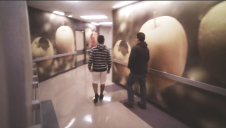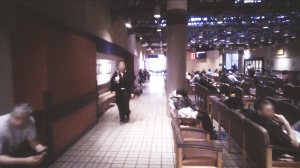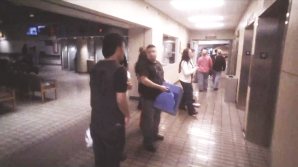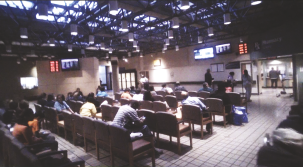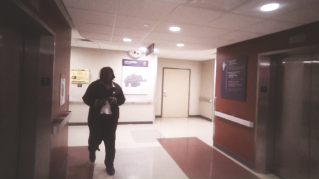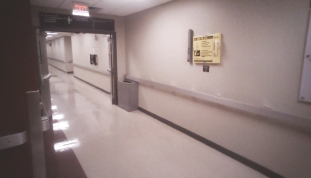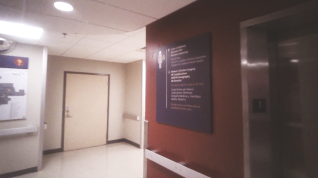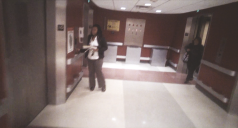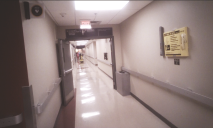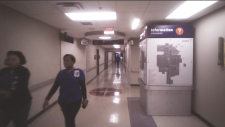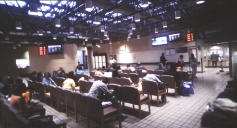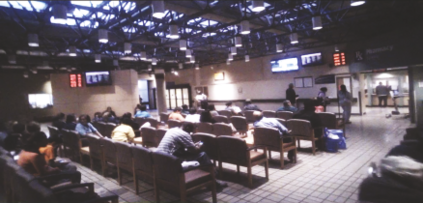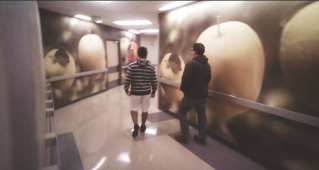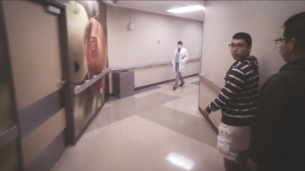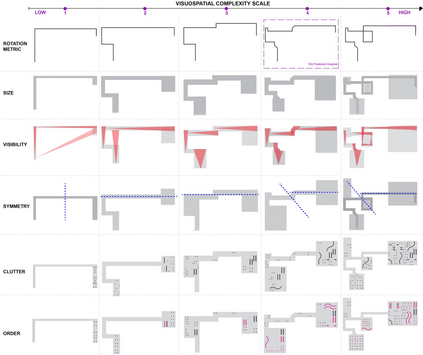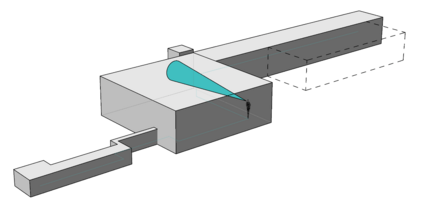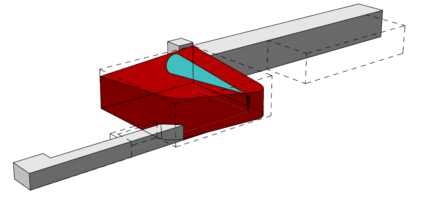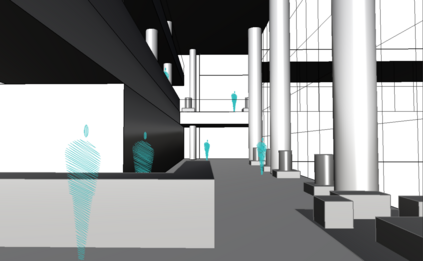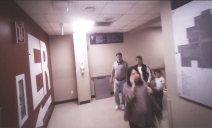
A people-centred approach for designing large-scale built-up spaces necessitates systematic anticipation of user's embodied visuo-locomotive experience from the viewpoint of human-environment interaction factors pertaining to aspects such as navigation, wayfinding, usability. In this context, we develop a behaviour-based visuo-locomotive complexity model that functions as a key correlate of cognitive performance vis-a-vis internal navigation in built-up spaces. We also demonstrate the model's implementation and application as a parametric tool for the identification and manipulation of the architectural morphology along a navigation path as per the parameters of the proposed visuospatial complexity model. We present examples based on an empirical study in two healthcare buildings, and showcase the manner in which a dynamic and interactive parametric (complexity) model can promote behaviour-based decision-making throughout the design process to maintain desired levels of visuospatial complexity as part of a navigation or wayfinding experience.
翻译:设计大型建筑空间的以人为本的方法要求从人类-环境相互作用因素的角度,从导航、路探索、可用性等相关方面的角度,系统地预测用户体现的相对热量经验。在这方面,我们开发了一个基于行为的相对热量复杂模型,作为认知性表现与建筑空间内部导航的关键关联。我们还演示了该模型的实施和应用,作为根据拟议相对空间复杂模型的参数确定和操纵沿导航路径的建筑形态的参数的工具。我们根据在两座医疗保健建筑中的经验研究提出实例,并展示了一种动态和互动的准度(兼容性)模型在整个设计过程中能够促进基于行为的决策的方式,以保持理想的导航或路探索经验中所需的结构复杂性水平。


